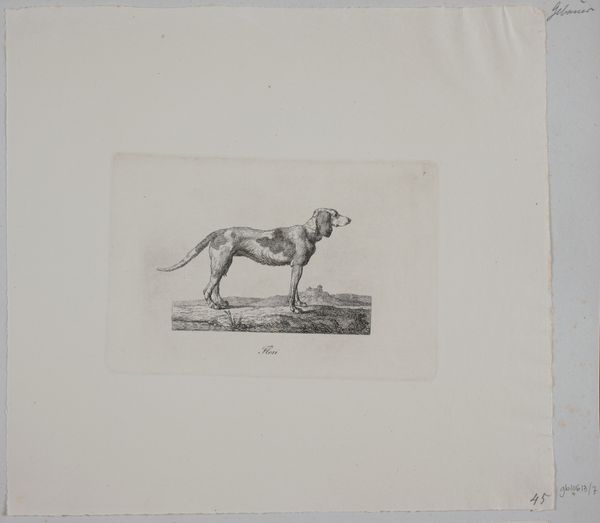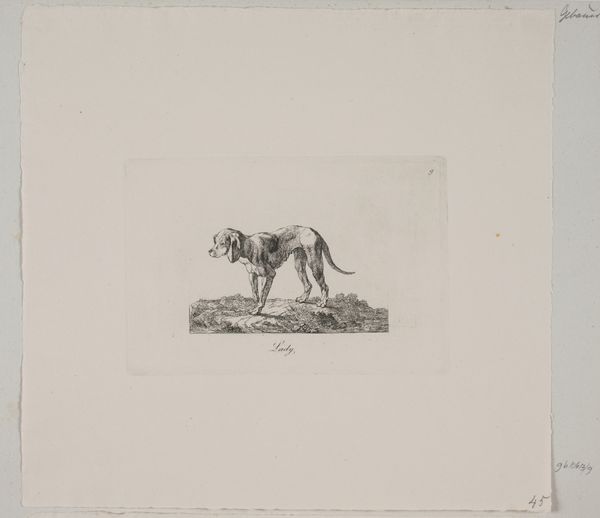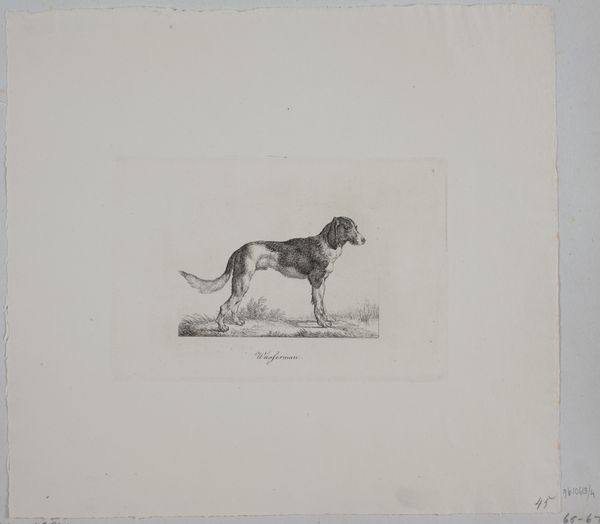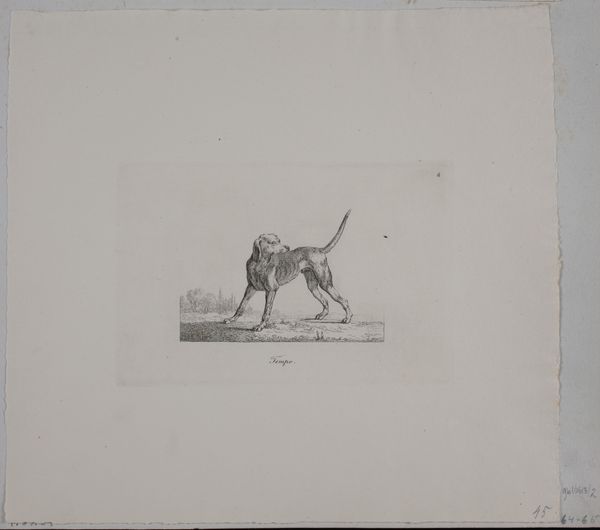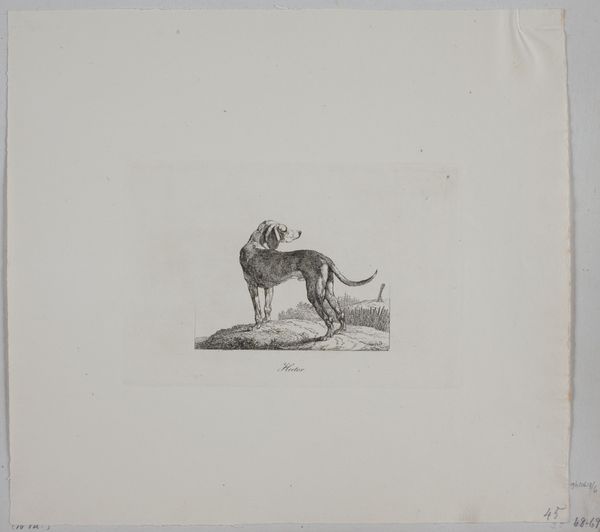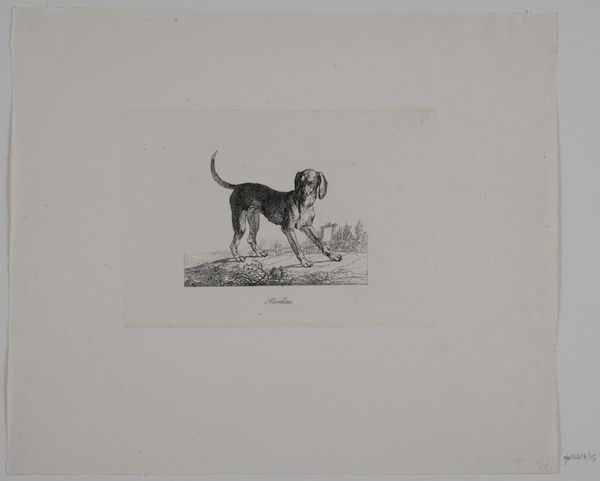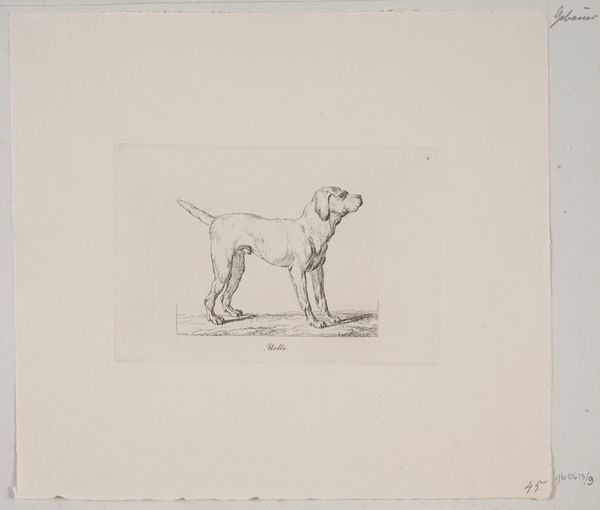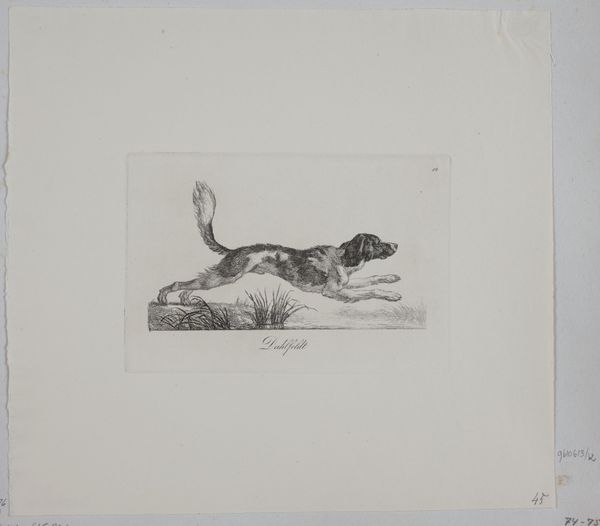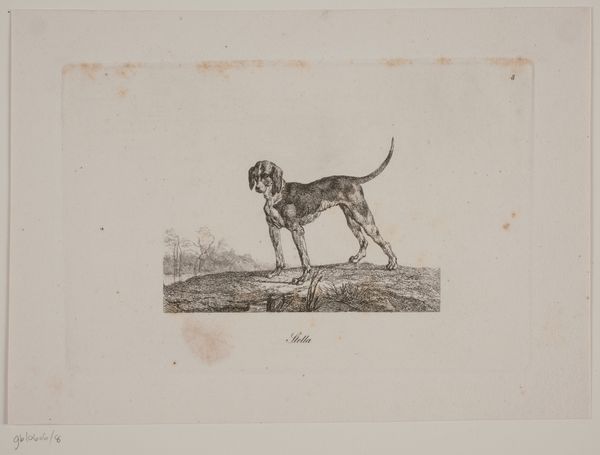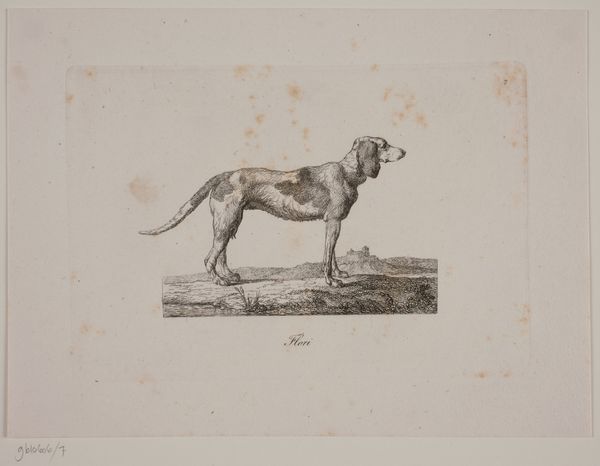
print, engraving
#
animal
# print
#
engraving
#
watercolor
#
realism
Dimensions: 110 mm (height) x 162 mm (width) (plademaal)
Editor: Here we have Christian David Gebauer’s "Stella," an engraving from 1821. It's a rather stark image, a solitary dog rendered with such detail. What do you see in this piece, beyond a simple depiction of an animal? Curator: I see a portrait deeply embedded within its time, reflective of evolving societal values and power dynamics. Consider the burgeoning middle class in the 19th century and their increasing engagement with leisure pursuits like hunting. Is this dog a mere pet, or does it represent something more in the context of hunting and land ownership, and ultimately class? Editor: So, you're saying it's not just about the dog, but what the dog signifies? Curator: Precisely. Animals in art are rarely just animals. Think about the long history of hunting as a privilege reserved for the elite, with specific breeds of dogs signifying status. Gebauer, working in a Denmark undergoing significant social shifts, was likely very conscious of these visual cues. What kind of narrative might Gebauer be building about class and identity through this dog? Does it subvert or reinforce expectations? Editor: I hadn’t thought about it that way. It's interesting to consider the political implications embedded in what seems like a straightforward portrait. It encourages me to look deeper into what these animals represent. Curator: Yes, by exploring these issues we understand how historical ideas about class, nationhood and identity shaped even seemingly benign depictions of animals. Always consider the unspoken questions any artwork is asking of its viewer. Editor: I see this old dog in a new way now. Thank you!
Comments
No comments
Be the first to comment and join the conversation on the ultimate creative platform.
